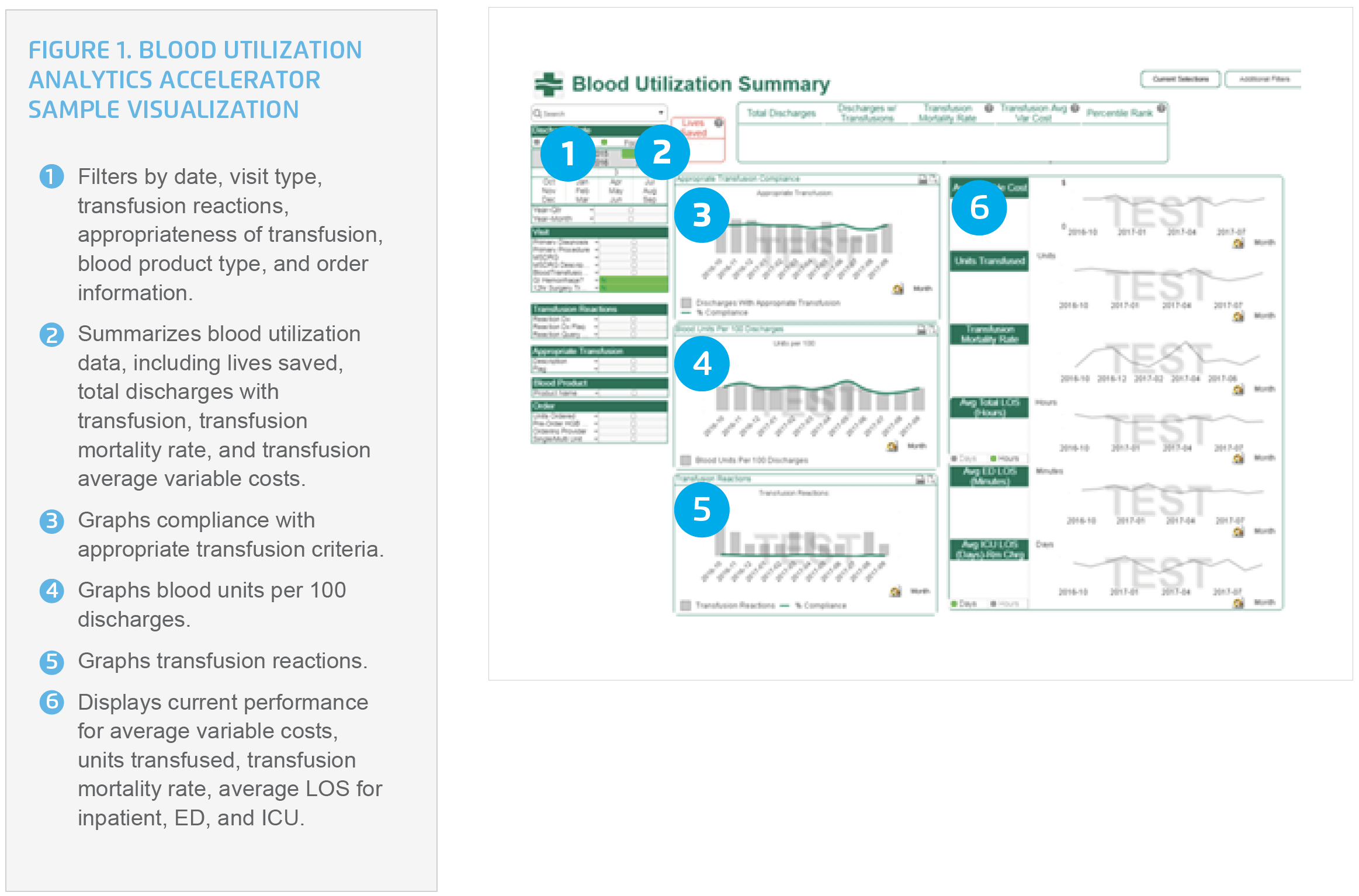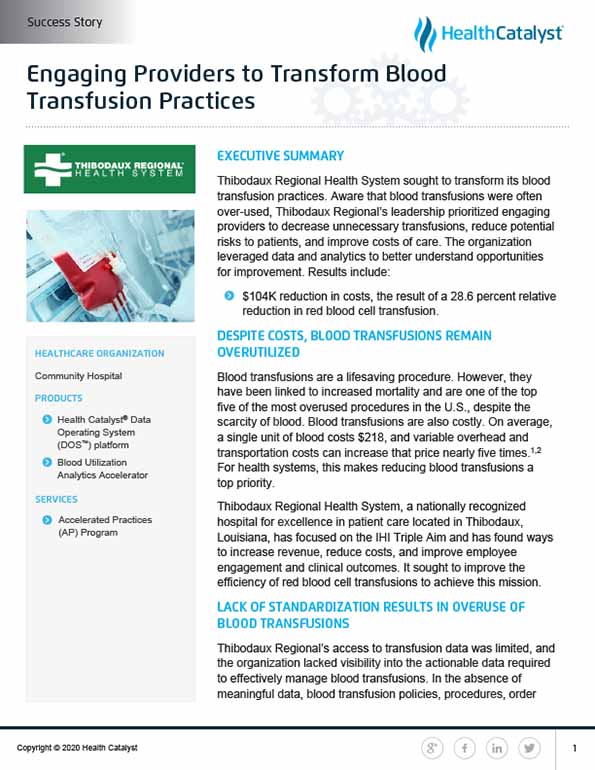Thibodaux Regional Health System sought to transform its blood transfusion practices. Aware that blood transfusions were often over-used, Thibodaux Regional’s leadership prioritized engaging providers to decrease unnecessary transfusions, reduce potential risks to patients, and improve costs of care. The organization leveraged data and analytics to better understand opportunities for improvement.
Blood transfusions are a lifesaving procedure. However, they have been linked to increased mortality and are one of the top five of the most overused procedures in the U.S., despite the scarcity of blood. Blood transfusions are also costly. On average, a single unit of blood costs $218, and variable overhead and transportation costs can increase that price nearly five times.1,2 For health systems, this makes reducing blood transfusions a top priority.
Thibodaux Regional Health System, a nationally recognized hospital for excellence in patient care located in Thibodaux, Louisiana, has focused on the IHI Triple Aim and has found ways to increase revenue, reduce costs, and improve employee engagement and clinical outcomes. It sought to improve the efficiency of red blood cell transfusions to achieve this mission.
Thibodaux Regional’s access to transfusion data was limited, and the organization lacked visibility into the actionable data required to effectively manage blood transfusions. In the absence of meaningful data, blood transfusion policies, procedures, order sets, and prescribing practices varied widely across the organization.
Aware that blood transfusion was often over-used, Thibodaux Regional’s leadership prioritized engaging providers to decrease unnecessary red blood cell transfusions, reduce potential risks to patients, and reduce costs of care. Thibodaux Regional leveraged its data and analytics to better understand the problem.
Thibodaux Regional’s care transformation initiative is the organization’s internal process to create a valued enterprise by achieving patient-centered excellence. Its consistent methodology engages interdisciplinary improvement teams focused on strategies to create better outcomes. The organization convened a care transformation improvement team, charging it with improving transfusion practices. Leadership engaged physician representatives from the pathology, oncology, cardiovascular surgery, internal medicine, and gastrointestinal specialties to facilitate the rapid development and adoption of improvement efforts designed to reduce red blood cell transfusions.
Thibodaux Regional used the American Association of Blood Banks (AABB) red blood cell transfusion guidelines to develop the organization’s standard transfusion policy, procedures, and order set—outlining red blood cell transfusion criteria based upon the patient’s hemoglobin levels, limiting orders for the initial number of units transfused to one.
Single-unit transfusion orders are embedded within the EMR and contain clinical decision support informing the ordering provider in real-time about the evidence-based indications for transfusion. A multifaceted education plan was developed and provided before the implementation of the transfusion guidelines, ensuring providers were aware of the new red blood cell transfusion guidelines and order sets. The education plan presented the clinical evidence, emphasizing the randomized clinical trials supporting restricting blood transfusions, and outlined the guidelines, leveraging marketing campaign language provided by AABB.
Thibodaux Regional leverages the Health Catalyst® Data Operating System (DOS™) platform and a robust suite of analytics applications as the foundation for its data and analytics. The organization implemented the Blood Utilization Analytics Accelerator to gain insight into the factors driving blood product utilization and management, using the analytics accelerator to guide the identification of improvement opportunities, and to standardize transfusion practices for the best clinical and financial results (see Figure 1).

The analytics accelerator provides Thibodaux Regional with near real-time visibility into details of blood product utilization, including ordering provider, specialty type, transfusion type, and patient hemoglobin level at the time of transfusion order. The organization uses the analytics accelerator to surface variation in prescribing practices, evaluate adherence to clinical indications for ordering blood, and to review the appropriateness of blood utilization on a per-patient and population basis.
Thibodaux Regional can accurately quantify the economic impact of reduced red blood transfusion using real-time cost data, enabling accurate assessment of transfusion costs, as well as opportunities for improvement. Data from the analytics accelerator is used for updating leadership regarding performance. Providers receive ongoing feedback on individual compliance with transfusion guideline recommendations, ensuring improvements are sustained, and new opportunities are not missed.
Thibodaux Regional transformed blood transfusion practices, ensuring the appropriate use of red blood cells, substantially reducing blood utilization and costs.
"We’ve been able to significantly reduce our transfusion rate and avoid unnecessary transfusions, which has improved patient safety and reduced costs."
– Greg Stock, Chief Executive Officer, Thibodaux Regional Health System
Thibodaux Regional plans to continue its data-driven approach for ongoing monitoring of blood transfusions, ensuring improvements are sustained. The organization intends to focus future improvement efforts on reducing platelet utilization.


